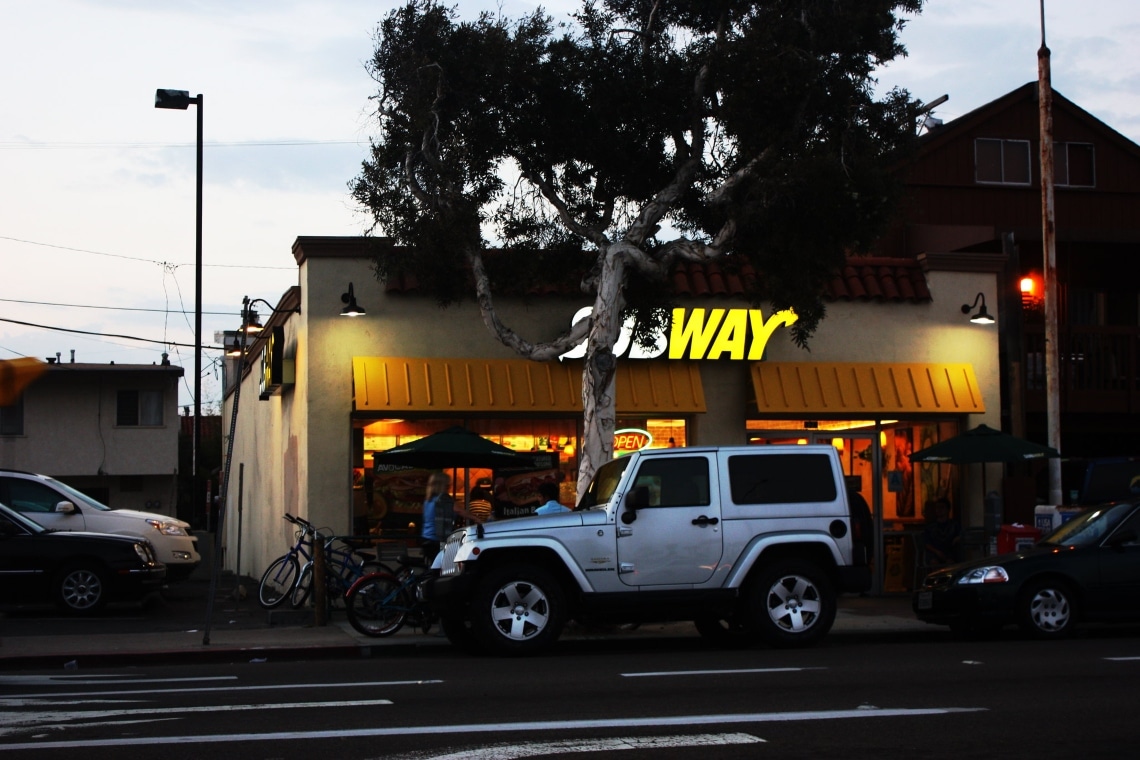Subway, the world’s largest fast food franchise, is testing the Bitcoin layer 2 Lightning Network payment solution, which is hyper-fast and almost completely free. Thus it will soon be possible for users to pay in Bitcoin.
The first tests of Subway’s new payment method are taking place in Berlin, Germany, where they are receiving exciting results.
Summary
Subway helps Bitcoin become a “classic” payment system
Subway is the world’s largest franchise by number of restaurants. So, the fact that such a restaurant giant is extending a hand to Bitcoin in this bearish market phase can only bode well.
In any case, Subway first experimented with Bitcoin almost thirteen years ago in Moscow, Russia.
Daniel Hinze, the owner of the Berlin subway franchise, has recorded more than 120 Bitcoin transactions in recent months. Indeed, Hinze is a big supporter of crypto and Bitcoin in particular.
He is the source of the desire to want to help Bitcoin become a usable asset to spend just like traditional currencies. Indeed, Hinze stated:
“Five years ago I started dealing with cryptocurrencies and in the last two years I have been dealing very intensively with the subject of Bitcoin. With that in mind, I have decided that Bitcoin might be the best money system.”
As is well known, Bitcoin is not yet a popular medium of exchange in Europe, despite the efforts of merchants, retailers and Lightning Network-enabled conferences.
Therefore, Hinze encouraged payments in Bitcoin by offering a 10% discount on all footlongs, meatball marinara and cookies paid for with BTC.
Moreover, to kick off the campaign, Hinze offered a 50% discount on all Bitcoin payments for one week:
“Over the course of the week there was, of course, extremely high demand. Our three restaurants were frequently visited by people who liked to pay with Bitcoin.”
German-speaking social media also played their part in Subway’s purchases as the hashtag #usingBitcoin took over.
Hinze partnered with Lipa, a Swiss-based Bitcoin company, to enable a point-of-sale solution for the purpose of easy use of the prestigious crypto.
From Bitcoin to crypto cards: the inclusion of the blockchain world in classical finance
Bastien Feder, CEO of Lipa, also said his mission is to make Bitcoin essentially irresistible to use, because Bitcoin is a currency.
Indeed, Lipa has equipped metros with commercial devices that allow customers to quickly scan a Lightning-enabled QR code, which enables fast, frictionless and low-cost payments.
In this regard, Lipa charges merchants only 1% for the service, as opposed to Visa or Mastercard payment lines, which charge double or more. Feder explained:
“It ranges from 2.5% to 4% depending on the merchant’s contract. If it’s a business card, there’s 0.5% more. On the other hand, if it’s a foreign commercial credit card, you pay up to 7% and don’t know it until the end of the month.”
In any case, even Visa and Mastercard in recent times have welcomed crypto, including Bitcoin, into their payment system. Both financial giants have created crypto cards, such as the Visa Crypto.com Card, to allow people to pay in crypto by converting money into local currency.
Visa and Mastercard’s crypto cards are by far the most widely used payment methods in the world. Indeed, they also allow people to pay and withdraw money in the form of crypto at more than 40 million points of sale (POS) around the world and countless online retail stores.
Lightning Network: what it is and how it works
As previously mentioned, Subway has chosen Lightning Network for payment via Bitcoin at its fast food restaurants. Indeed, the payment experience through LN differs significantly since Subway franchises first accepted Bitcoin payments in 2014.
Lightning Network is a protocol designed to improve Bitcoin’s scalability. So, it functions as a second layer on top of Bitcoin because it allows the cryptocurrency to do things it normally could not have done.
Specifically, instant transactions and with very low fees. The development of this protocol began with the work of Joseph Poon y Thaddeus Dryja. And today it is companies like Blockstream, Lightning Labs, and ACINQ who are driving its development.
Prior to LN, the process was inconvenient for retail payments because of wait times and sometimes high fees. With LN, customers enjoy faster settlement times than with Visa or Mastercard and lower fees due to a peer-to-peer payment network.
In this regard, Lipa and Hinze predict a steady increase in demand for Bitcoin payments. Indeed, LN is enabling communities eager to trade, from Senegal to Guatemala to Switzerland.
Hinze said that, for the time being, the Subway restaurant only accepts the world’s most recognizable currency because he and his business partners firmly believe in Bitcoin.


